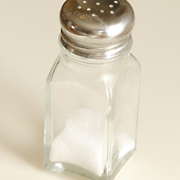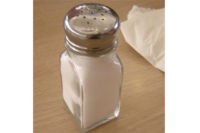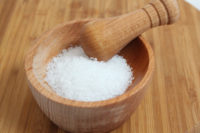 In observance of American Heart Month, The Centers for Disease Control has released a special report in its February edition of CDC Vital Signs. The report, Where’s the sodium? There’s too much in many common foods, states that about 90 percent of Americans eat more sodium than is recommended for a healthy diet.
In observance of American Heart Month, The Centers for Disease Control has released a special report in its February edition of CDC Vital Signs. The report, Where’s the sodium? There’s too much in many common foods, states that about 90 percent of Americans eat more sodium than is recommended for a healthy diet.
Most of the sodium people eat comes from processed foods and foods prepared in restaurants. Sodium is already part of processed foods and cannot be removed. Some highlights from the report include the following:
►Reducing the sodium Americans eat by 1,200 mg per day on average could save up to $20 billion a year in medical costs.
►Types of food matter. More than 40 percent of sodium comes from the following types of foods: breads and rolls, cold cuts and cured meats, pizza, fresh and processed poultry, soups, sandwiches (e.g., cheeseburgers), cheese, pasta dishes, mixed meat dishes (e.g., meat loaf with tomato sauce) and snacks such as chips, pretzels and popcorn.
►Brands of food matter, too. Different brands of the same foods may have different sodium levels. For example, sodium in chicken noodle soup can vary by as much as 840 mg per serving.
►About 65 percent of sodium eaten comes from food bought at retail stores; therefore, consumers should look for lower sodium choices. About 25 percent of sodium comes from restaurants, and it can be difficult to know how much sodium is in restaurant food.
►Americans eat on average about 3,300 mg of sodium a day. The US Dietary Guidelines recommends limiting sodium to less than 2,300 mg a day, and recently, the American Heart Association recommended that all Americans should limit sodium to less than 1,500 mg per day.
While the CDC report suggests many things consumers, food processors and restaurants can do to reduce sodium levels, the Center for Science in the Public Interest (CSPI) suggests that voluntary efforts by industry to reduce sodium levels have failed and is asking FDA to create strong, but realistic, mandatory regulations to reduce sodium levels in restaurant and packaged foods. According to a recent survey commissioned by CSPI, the public sees the need to lower sodium levels in food. Nearly three-quarters (71 percent) of Americans surveyed indicated the food industry has a responsibility to reduce the sodium content of its foods, and 58 percent support a government requirement to reduce sodium in processed and restaurant foods.
“Over-consumption of sodium is one of the single greatest causes of hypertension and cardiovascular disease, and restaurant and packaged foods—not salt shakers—are far and away the largest contributors of sodium in the American diet,” says Julie Greenstein, CSPI deputy director of health promotion policy. “Unfortunately, the food industry has failed to significantly bring down sodium levels despite 40 years of governmental admonitions. It’s time for the FDA to step in and require reasonable reductions.”
For more on the CDC report, visit CDC online.
For more information from CSPI, download CSPI’s letter to FDA.


